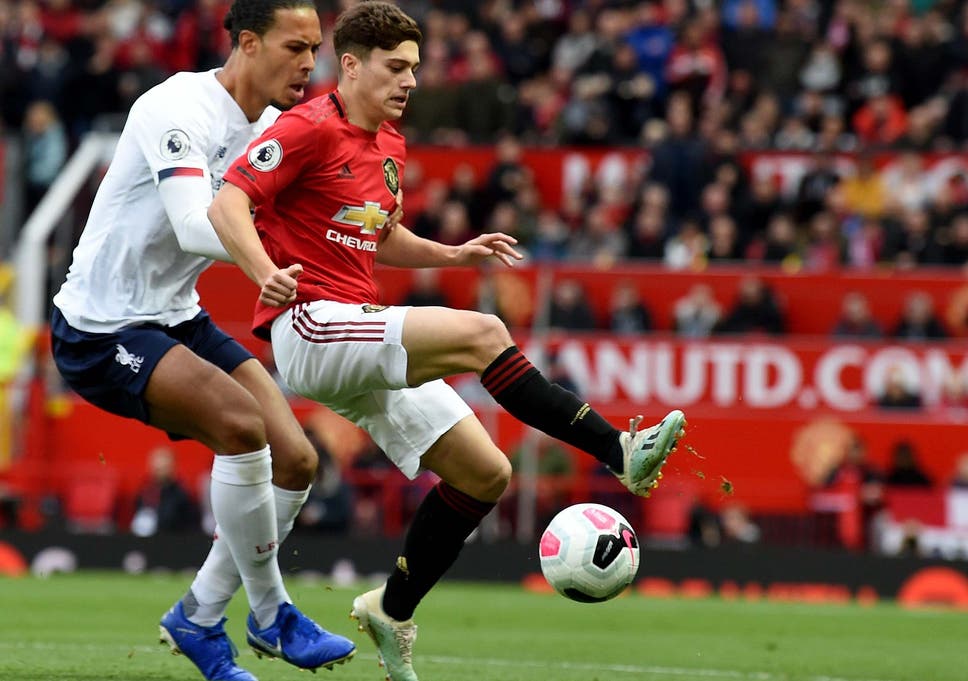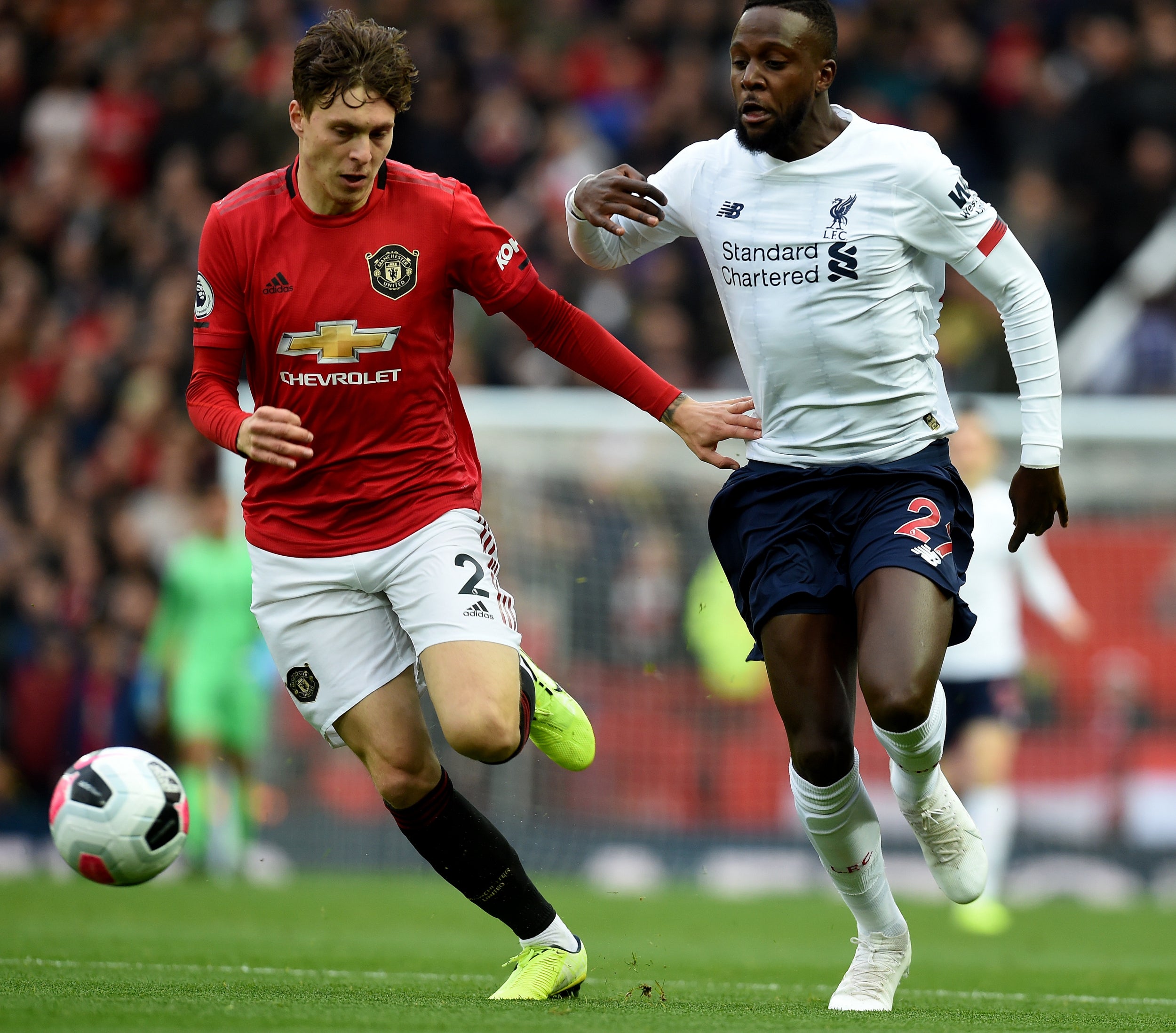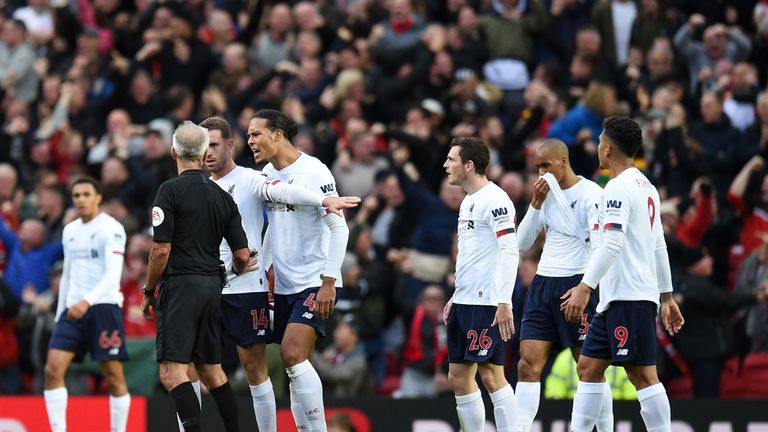Man United 1-1 Liverpool: An in-depth tactical analysis
Adam Lallana’s 85th-minute equaliser saved Liverpool the blushes and rescued a vital point for the Reds against Man United in a 1-1 draw at Old Trafford as two of the most decorated clubs in English football shared the spoils in what was an evenly-contested encounter in the Premier League on Saturday.
Having won each of their first 8 games in the Premier League, Liverpool went into the much-anticipated clash at Old Trafford as the outright favourites against Ole Gunnar Solskjaer’s side, who had picked up only a couple of victories in the first 8 rounds.
United, though, got their game plan spot on and thwarted Jurgen Klopp’s cavalry very effectively, whilst also using some smart counter-attacking football to exploit the wide open spaces left at the back by the opposition’s risk-reward strategy.

The raucous home crowd at Old Trafford erupted to life when Daniel James set up Marcus Rashford for the opener midway through the first half and the fans would have sensed an unlikely victory to be on the cards when the score stayed 1-0 late into the second half.
Liverpool, though, found that piece of inspiration through an unlikely source, with Lallana getting on the end of Andrew Robertson’s cross to score his first goal for the club in over two-and-a-half years.
In the end, the 1-1 scoreline was a fair reflection of how things panned out for both the teams over the ninety minutes.
However, the tactical nous involved in the game probably went under the radar, with Solskjaer and Klopp cancelling out each other in what was a tactical sea-saw battle split into two halves.

First half
Solskjaer went into the game with a back-three system, with Maguire, Lindelof and Rojo forming the centre-back trio, and Young and Wan-Bissaka playing out wide as wing-backs.
Fred and McTominay formed the central midfield pivot with Andreas Pereira playing virtually in a false 9 role alongside Rashford and James up top in the wide areas.
On the other hand, Liverpool went in with their regular 4-3-3 system, with Divock Origi replacing an injured Mo Salah. Fabinho, Wijnaldum and Henderson formed the midfield trio and the backline was the same as usual.
Now, the role of Liverpool’s full-backs as the team’s main creative outlets has been well-documented over the past 18 months.

It is well known that Salah or Mane play narrow and Firmino is the mobile man, with the full-backs providing the width and playing as auxiliary wingers.
Well, that is exactly the way Liverpool have played for quite a long time now and Solskjaer knew that he had to find a way to nullify the full-back threat if United were to come away with a positive result.
Wan-Bissaka and Young did a brilliant job in closing down Alexander-Arnold and Robertson, as Rashford and James enjoyed plenty of joy against Matip and Van Dijk in 1v1 and 2v2 situations to wreak havoc on the counter.
Due to the diminished influence of Liverpool’s full-backs, United were able to carve out some good chances and that eventually resulted in Rashford’s opener.

Van Dijk and Matip generally pride themselves in coming out on top in 1v1 and 2v2 situations but United had the pace, if not anything else, to hurt Liverpool.
With Mo Salah not in the scene and the full-backs taken out of the game by United’s wing-backs, the Reds never posed a genuine threat up top and looked exposed defensively against the pace of Rashford and James, as United’s game plan worked to perfection.
Also, it is worth mentioning the role of Pereira, who worked tirelessly to switch between a No.10 and No.9 role, whilst also dropping down deep to thwart Fabinho, the heartbeat of Liverpool’s midfield.
Second half
Jurgen Klopp sensed the danger at the interval and brought his in-game management skills into play to nullify United’s strategy in the second half, switching to a more offensive 4-2-4 formation.

The introduction of Oxlade-Chamberlain in place of Origi, coupled with Henderson moving further up the pitch to play as a part of the forward line, left Wijnaldum and Fabinho as the two pivots in the middle of the park.
That not only allowed Mane and Firmino to play a more central role and occupy United’s three central defenders but it also allowed the likes to Robertson and Alexander-Arnold to break the shackles and create a 6v5 situation in favour of Liverpool in the attacking third.
United’s wing-backs, who had so effectively nullified the threat of Liverpool’s full-backs in the first half, had to drift more central to cope with Jurgen Klopp’s masterplan and the floodgates eventually opened for the visitors.

United never had enough options on the bench to cope with Liverpool’s tactical change in the second half and with the visitors virtually playing a front six, the Red Devils eventually succumbed to the pressure.
Robertson’s inch-perfect cross from the left was tapped in by Lallana late in the game, as Liverpool somehow rescued a point.

